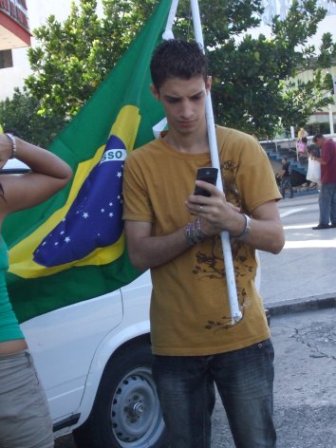Informal Business and International Sports
Dmitri Prieto

It’s no secret to anyone that international sports is a big business. This includes what is referred to in Cuba as “good sports,” meaning “amateur” athletics (I put this in quotation marks because it is known that many non-professional athletes are involved in sports as their main activity, even though they’re not paid directly).
Through the online alternative media —not from Cuban TV— that circulates discretely across the country, we learned some of the details of the commercial machinery that operated behind the scenes at the recent Soccer World Cup.
In a magnificent essay, Uruguayan writer Eduardo Galeano spoke of the International Football Association (FIFA) as a large corporation, as did other authors who spoke out on that body.
For many, the showbiz world of soccer is indissolubly bound to brand names. Each international team has an exclusive contract with its supplier, and therefore on the field they exhibit that brand name along with their team’s logo. Cubans are very familiar with this.
It’s interesting to compare the enthusiasm generated by the Soccer World Cup with that sparked by Cuban provincial baseball competitions. I say provincial because our national league is the competition where we see the most displays of baseball paraphernalia, not in international competitions, in which Cuban performance has also declined a great deal.
While in some way baseball fans passion among all sectors of society (with people rooting for their teams and publically wearing the symbols and colors of their teams), soccer —though of interest to many people— becomes visible with colors and attributes only among a rather comfortable sector of the middle class. This is perfectly verifiable on the street.
Nor is it a secret that much of the sports paraphernalia is bought on the informal market, but the elite make their purchases of such clothing and footwear in “official” (State-run) brand name stores, which everyone knows are expensive in Cuba. Only small social sectors have access to these.
On a national television news broadcast during the soccer championships, a Cuban representative of Adidas spoke out in defense of his firm in the face of criticism concerning supposed defects in its Jabulani ball – the official ball of the World Cup. He explained its virtues in detail.
By the way, the Jabulani is still sold in some of the upscale Havana stores, since Adidas is the exclusive supplier of Cuban athletic supplies. Even Fidel Castro is usually seen wearing his Adidas jogging suits, though in one of his more recent appearances he was shone sporting a Puma jacket.
I don’t want to be wet blanket in terms of the emerging interest of Cubans in soccer. Even today, weeks after the World Cuba, sandlot teams can still be seen kicking balls around in all neighborhoods of Havana, though with the recent World Volleyball League championships, part of the enthusiasm veered off in the direction of that sport.
What has caught my attention is the innocence with which soccer fanaticism has been received. It was as if there were two forms of experiencing soccer in Cuba: one by kicking the ball around, even with one’s bare feet; and the other one through getting dressed up for the championships (and in brand name garb).
Let’s hope that what prevails is the more popular and sincere form of participating in sports, versus the more speculative and fetishistic practices.





